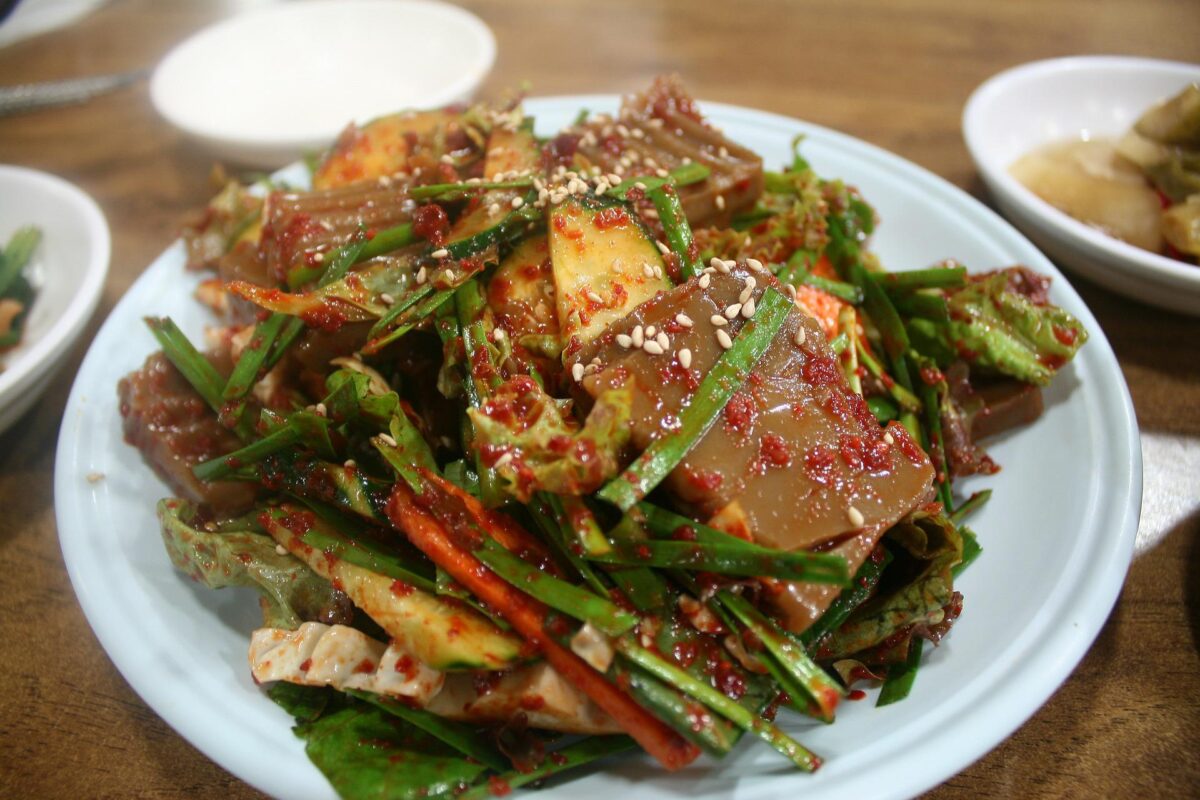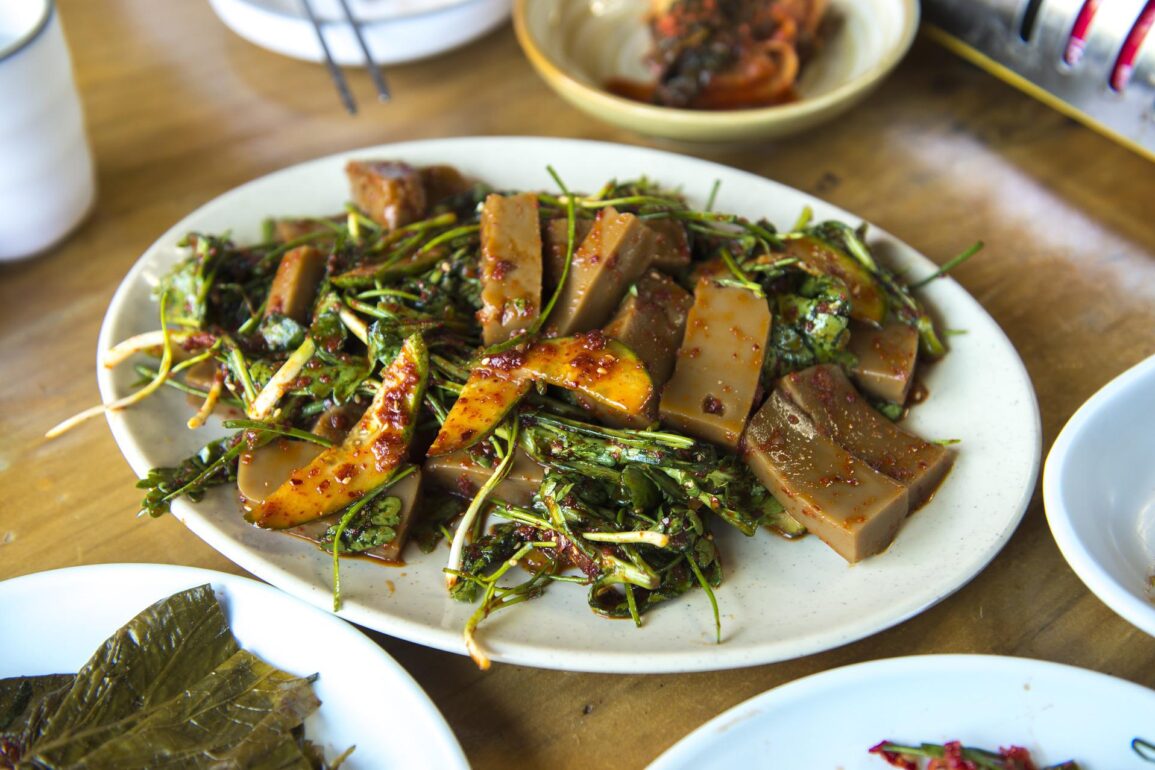Dotorimuk 도토리묵 Acorn Jelly
Words by Stephen Revere
It’s hiking season! The most beautiful time of the year for being outdoors is on its way, and the weather will be cool and brisk while the leaves turn amazing shades of red, orange, and yellow. That means it’s time for Acorn Jelly Salad! This classic post-hike dish is best paired with some nice makgeolli (막걸리) or even better, homemade dong-dong-ju (동동주), both forms of rice wine.
The main ingredient of this dish is our “Taste of Korea” this month. I know it sounds bizarre; acorn jelly? But this is absolutely wonderful stuff when prepared the traditional Korean way. You’ll hear it called acorn “jelly” most of the time, but it keeps shape and shakes just like that old brand name you grew up
with — Jello.
Essentially do-to-ri-muk itself is served in three forms. The one you are most likely to have run into is as a side dish, where the jelly is simply sliced with a wavy knife for some visual appeal and then topped with a soy sauce/veggie mixture, with the veggie usually being green onion. Don’t let anyone ever try to convince you to try to eat this with chopsticks — just reach for the spoon and save yourself some embarrassment. Even Jackie Chan couldn’t eat this slippery stuff with chopsticks.

The next most common way you will find do-to-ri-muk is in its alcohol side dish (안주) form, which is a tossed salad style otherwise known as “mu-chim”, and the post-hike treat I mentioned above. “Mu-chi-da” means “to season and toss”, so essentially this is just a tossed salad with the acorn jelly added for substance. Common ingredients include carrots, lettuce, perilla leaf, cucumbers, onions and green onion. And as with so many dishes, they may decide to spice it up quite a bit with some hot peppers. If you’re not good with the spicy stuff, ask them ahead of time.
Finally, you may occasionally run across 도토리묵밥 — acorn jelly rice. I had never tried it and half of the 10 staff had never tried it, but we went out for it in preparation for this article. It’s an ice cold broth served with a bunch of fresh vegetables and sliced do-to-ri-muk. You’re handed some cooked rice which you dump in and eat cold with the noodles. Unique and refreshing, the staff all enjoyed it for a hot summer’s day lunch. You may still be able to find it if you look hard enough, but hurry because it’s certain to disappear from menus as the early September heat fades to a cool, crisp ending.
Maybe you would like to try to made one by yourself? Check out the recipe of Maangchi!
——–
Netizen’s Picks
Omokyo Torichon 오목교 토리촌
With 11 years of tradition and a reputation as a “well-being” or health-food restaurant, Omokyo Torichon serves a large menu of acorn-based dishes. Using clean domestic acorns, Omokyo Torichon’s menu includes Dotorimuk-muchim (Acorn Jelly Salad), Dotori-Bindaetteok (Acorn Pancake), and Dotori-Sujebi (Acorn Soup with Torn Noodles). The generous size, chewy texture, and rich flavor of each dish will surprise you.
406-228, Mok-dong, Yangcheon-gu, near Hyundai Department Store (Mok-dong Branch). 02-2652-2547
Busan Solbat Jip 부산 솔밭집
Most Busan University students know this restaurant. Secretly hidden in Busan University’s hilly campus, Solbat Jip specializes in dotori-muk. Dishes harmoniously mix fresh vegetables, dotori-muk and sweet-and-sour sauce for a taste that will whet your appetite for more. The outdoor atmosphere in the middle of the mountains also lends a freshness to the mind and body. Jangjeon-dong near Busan University Education Building (Sabumdae). 051-515-0066
Gangmaeul Daramjui 장마을 다람쥐
Just can’t get enough acorns? Then visit Gwangju City’s Gangmaeul Daramjwi, or “River Village Chipmunk.” More than 10 acorn dishes on the menu include acorn noodles, acorn jelly rice, acorn jelly salad, and Korean style pancakes with acorns. Each dish features a different and unique taste.
299-2, Namjong-myeon, Gwangju-si, Gyeonggi-do. near Paldangho. 031-762-5574
===========




